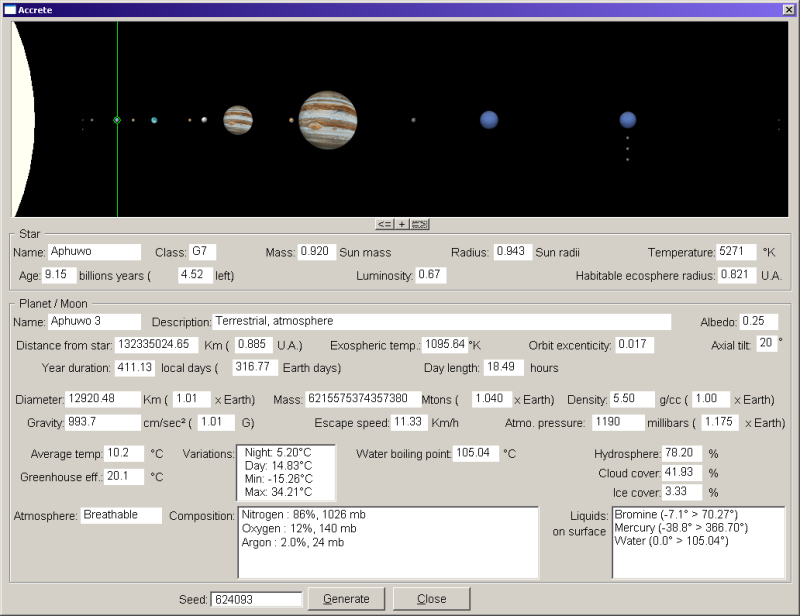Here is the sequel of these two previous threads:
- Random terrain
- Random planet mesh
The purpose of this program is to generate "scientifically sound" solar system, along with a lot of informations about each of its planet (type, year duration, temperature, atmosphere, etc..).
It is mainly based on two (rather old) articles :
- "Habitable Planets for Man", S. H. Dole (1964)
- "Extra-Solar Planetary Systems: A Microcomputer Simulation", Martyn J. Fogg (1985)
and on several implementations of an algorithim called "Accrete" (Pascal, C, C++, Java...).
The principle is to create a random star with a random quantity of gas and dust around it, and to simulate the accretion of these gas and dust to form planets. Then, from the size/mass/composition/position of these planets, it computes what it looks like.
I can't say that I have a complete understanding of the theory, far from it
Well, here you go. It's a beta version, not perfect nor complete, but it's already quite fun. I can't post the code here (too big) but you'll find it in this zip archive:
http://keleb.free.fr/codecorner/downloa ... ete-en.zip
along with an EXE to test it.
Screenshot:

The ergonomy of the screen is quite bad, so:
- Type in a number in the "seed" zone (or let it blank) to initialize the random number generator, then click on "Generate".
- To browse the planets of the system, click on the tiny buttons under the image
- To zoom on a planet and browse its satellites, click on the tiny "+" button.
A few seeds that gives interesting results:
- 863150: 11 planets, 1 terrestrial planet with 1 terrestrial moon, both habitable
- 25329 :9 planets, 1 sub-Gas giant with its outer layer at 14.8°C and 1 habitable moon (perfect if you want to install a gas mine a la Bespine)
- 528439: 12 planets, 1 venusian, 1 non-habitable terrestrial, and a nice asteroids belt
- 103365: 13 planets, 1 oceanic planet with breathable atmosphere
To do:
- Some infos are missing for moons (distance from the planet, rotation, etc.).
- Add rings around planets.
- Improve the planet classification (I still don't know what to do of the "gas dwarves", which are massive enough to accrete gases like the gas giants, but are composed of almost 100% solid stuff like the rocky planets).
- The name generator could be better.
That's all! Now, it's time to boldly go where no man has gone before...




